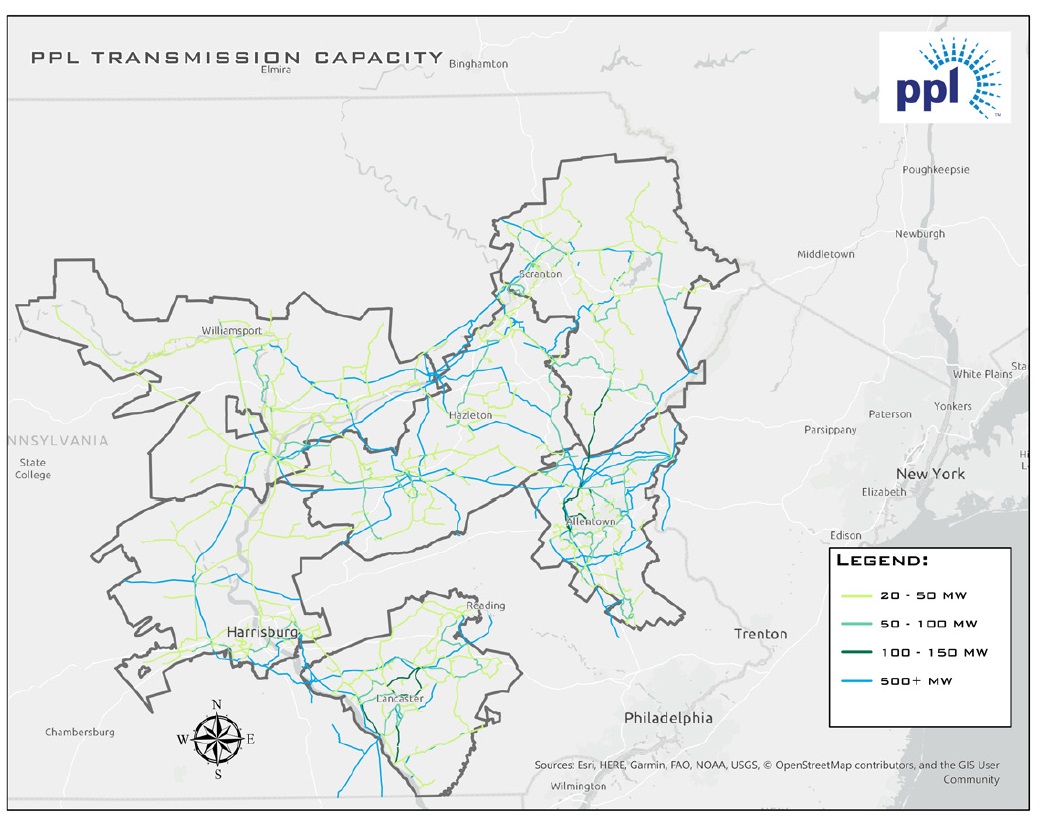Electric Infrastructure Powering Industry in Pennsylvania
Deregulation: Pennsylvania became a deregulated state in the energy market in 2000. This is good news for consumers, especially industrial because they can shop competitively for their supplier. Deregulation helped to reduce electric and natural gas costs by allowing consumers to competitively shop for suppliers. Larger electric users can be eligible for lower rates. Pennsylvania is one of the most successful places in both the United States and Canada to have transitioned to a deregulated energy market.
Learn more about deregulation at The Ultimate Guide to Pennsylvania Electricity Deregulation.
Electric Distribution Territories: The Pennsylvania Public Utility Commission regulates 11 electric distribution companies that serve homes and businesses across the state. The PUC also issues licensing to various electric generation suppliers that sell services in the competitive market.
Electricity Rates: A review of current LP5 (large power users) customers rates can provide a good perspective on costs and can range between 6 to 8¢/kWh, some as low as 4¢/kWh. Industry and consumers can contract with energy management and brokerage firms that provide insight and advice customized based on a projects needs to get the best overall value. There are many factors that go into industrial electric and natural gas pricing including type of energy (renewable, etc.) purchase date, terms, type of rates (restrictions or variables), etc. The most accurate way to provide projected pricing is to review usage history of similar sized facilities and compare that with available suppliers, terms and rates.
Electric utilities are required to provide a Price to Compare. There are two sections to the electric bill. There’s a supply section which includes generation and transmission charges and then there’s the distribution section which are the Electric Utility charges. Electric utilities encourages all customers to shop for a supplier for the supply section of the bill at www.papowerswitch.com. EnergyBot using EIA data shows the average Pennsylvania commercial electricity rate at 11.05 ¢/kWh (10% lower than the national average). If a company does not shop for generation and transmission, they will be placed on Real Time Pricing which is the hourly wholesale price of generation on the PJM system. sometimes there is a better rate on Real time pricing, but then it is subjected to swings based on supply and demand. Click here for a historical price data. PPL’s distribution charges are based on the size of service requested. LP5 service is 69kV service, PPL would provide customer with a service drop to the company’s own step-down substation. All of this would be determined by the amount of load the customer would consume. Normally, anything larger than 8-10 MW would require LP5 (69kV) service, otherwise they can utilize distribution level service which is faster and cheaper to access.
Large Power Requirement Projects: PPL Electric Utilities, serving eastern and central Pennsylvania, has available transmission capacity at all voltage levels, from 69 kV to 500 kV. PPL Electric has superior reliability, industry-leading innovation and award-winning customer services. Transmission is the backbone of the electric grid. Since 2013, PPL Electric has invested in upgrades and innovation to provide a safe, reliable, affordable and sustainable source of power for smart economic growth.




